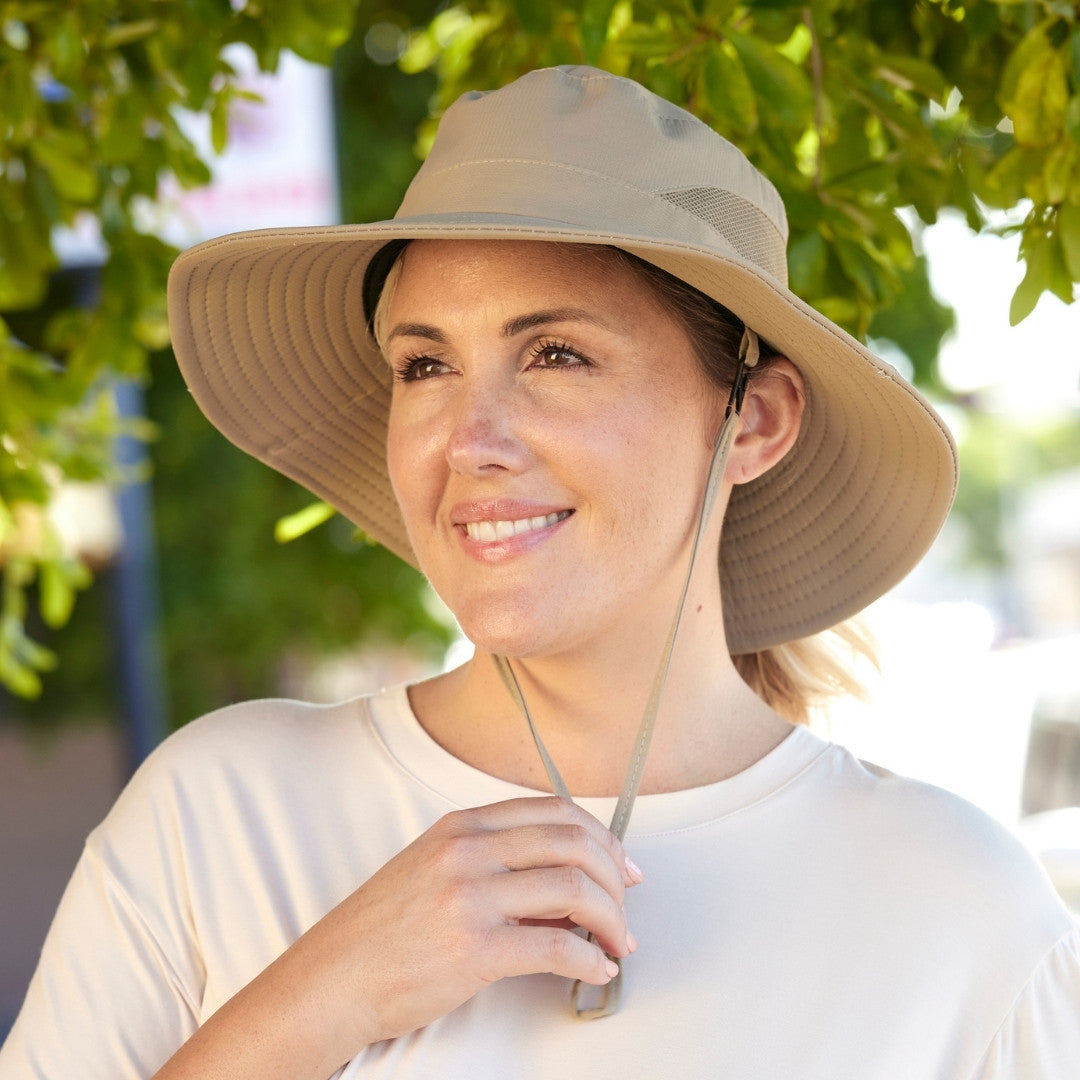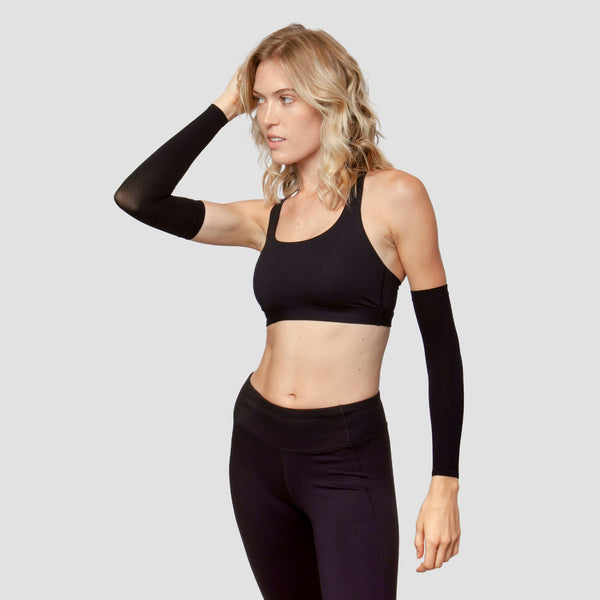Do you know that the risk for melanoma is twofold when you have 5 or more sunburns?
Excessive exposure to sunlight and ultraviolet (UV) rays can cause DNA damage. The repetitive injury to your skin cells can trigger mutation, leading to melanoma.
You may think it’s something that can be taken care of, but that’s not all. UV rays cause around 90 percent of non-melanoma skin cancers.
That’s why you need protection from sunlight and UV rays. Applying sunscreen is the first level of safety, but 47% of Americans admit to never using sunscreen.
There are many ways to protect yourself against the sun’s harmful UV rays.
Among them are wearing sun protection clothing. You can wear a UV protection long sleeve shirt or a sun hat for added sun safety in your every day life.
But we bet you didn't know even certain foods could provide sun protection. Most people are not aware of this. Below is the list of foods with properties helpful for sun protection.
Have Some Berries

This is a fruit rich in antioxidants and vitamin C. Eating blueberries helps you fight free radicals that can damage skin cells. So, if you are planning to spend a day on the beach, have some blueberries for UV protection.
Cherries and strawberries have ellagic acid which is an anti-toxin compound. They also contain resveratrol that can constrain cancer cells and tumors.
Consume Fatty Fish

Eating seafood and fish can minimize the risk of skin cancer. Fish have anti-inflammatory properties and are rich in omega-3s fatty acids. Both fish oil and meat can help in preventing skin cancer and make sunburn less severe.
If you are looking for fish options rich in omega-3, trout, herring, sardines, and salmon are all excellent choices.
Sardines fish have an antioxidant named selenium that protects skin from UVB rays.
Add Avocado to Your Diet

Avocados offer several health benefits including protection against solar radiation. We know that its paste has healing power and can remove dead skin. The antioxidants and vitamin C present in this food can smooth out skin wrinkles.
But do you know that avocados can also provide protection against photo damage?
Eating this green food means you will have UV protection. The fruit can also provide a remedy for skin problems caused by prolonged sun exposure.
Eat Watermelon
We know lycopene can absorb both UVB and UVA rays. This is an antioxidant nutrient that watermelons have in abundance.
If you need a natural sunblock against UV radiation, lycopene is a great resource.
However, you must know that your skin will need weeks to become sun protective. Also, eating watermelons is not as effective as wearing sun-protective clothing. But there’s no harm in consuming juicy watermelons in hot weather for a few weeks.
Drink Green Tea

Both black and green tea contain flavanol, which is good natural protection. Research has proved that green tea can prevent sunburns and reduce skin damage. Also, it provides skin firmness and protects your skin in case the body has insufficient collagen.
It’s rich in epigallocatechin-3-gallate (EGCG) that destroys free radicals and provides UVA protection. Studies have shown that it is also good for lowering skin redness.
Eat Carrots and Leafy Greens

Do you know that the human body can convert beta carotene into vitamin A?
Carrots and leafy greens vegetables are great resources of beta carotene. You can also get additional antioxidants such as zeaxanthin and lutein from leafy greens.
The best way to get the most out of green vegetables is to consume these foods daily. You can also make smoothies, salad or cook them together. A few weeks of regular consumption can provide protection against sun damage.
Try Sweet Red Peppers

According to the Photochemical and Photobiology journal, beta-carotene can help the human body fight against sunburns. This is a pigment that sweet red peppers have in abundance.
Per 100 grams, there are around 42,891 micrograms of beta-carotene in red pepper.
However, you must know that the human body needs 10 weeks of beta-carotene supplementation to get sun protection. So, if you are planning to enjoy the beach season, start eating sweet red peppers.
Have Cauliflower

Colored vegetables are a good source of carotenoids and are more nutritious. They have more oxidants, but you can’t overlook the benefits of pale-colored foods.
Cauliflower is one such example, a rich source of antioxidants. This is a natural food that can provide you with UV protection. It has histidine, an alpha-amino acid that stimulates urocanic acid production. This in turn enables your skin cells to absorb UV radiation without any negative effects.
Eat Tomatoes

The red color of the tomato gives us the hint that it’s a lycopene-rich food. Scientific studies have shown that people who eat tomatoes or consume tomato paste are less likely to get sunburns.
Nutritionists normally advise people to consume fresh vegetables and fruits. However, in the case of tomatoes, the absorption of lycopene into the human body is better when tomatoes are processed.
Intake Spinach and Sweet Potatoes

Both spinach and sweet potatoes contain beta carotene, an antioxidant. It is proven that this carotenoid is helpful in reducing the redness of the skin. This simply means if you consume sweet potatoes and spinach you have fewer chances of skin burning under the sun.
Consume Nuts and Seeds

After fish, seeds and nuts are great sources of omega-3s. Since this essential fatty acid is not produced in our bodies, we must get it from our diet.
Flax or linseed, chia seeds, hemp seeds, and walnuts all contain omega-3 fatty acids. So make sure you include these foods in your everyday diet.
Eat Citrus Fruits

Fruits, especially citrus fruits, are a great source of vitamin C. This is a vitamin that is known to provide protection against UV rays. Plus, it keeps your skin moist and prevents wrinkle generation.
Kiwi, grapefruit, and oranges are all great sources of vitamin C. Guava is another fruit that you can make part of your diet.
Try Eating Tofu

This 2,000 years old Japanese cuisine is a protein-rich food. This is not just a good alternative to meat but can also protect your skin.
Tofu contains high concentrations of isoflavones which can help you look younger.
These compounds offer elastic fibers and collagen which in turn improves the thickness of your skin. A higher concentration of these compounds also prevents the negative effects of UV radiation.
Have Some Oatmeal

Many of us are aware of oatmeal’s benefits as a beauty ingredient. But the popular breakfast staple also has miraculous health benefits.
The antioxidants present in oatmeal prevent skin damage at the cellular level. These compounds fight free radicals, have anti-aging effects, and support skin regeneration as well.
Eat Grapes & Pomegranate

Both pomegranate and grapes contain polyphenols, a sun-protective agent. Red grapes have resveratrol while pomegranate and strawberries provide ellagic acid.
Red grapes have phytonutrients that can prevent reactive oxygen species (ROS) production. This is a destructive chemical believed to have a link with sun exposure which can cause cell death or cancer.
Another compound present in grapes is quercetin which offers UVB protection. This is a compound that lowers the risk of DNA damage in skin cells.
Go for the Dark Chocolate

Dark chocolate has a higher level of flavanols, which can hinder sun damage to your skin. It not only improves hydration and skin density but also increases blood flow to your skin.
Chocolate with a higher amount of cocoa reduces the chances of skin redness. So, the next time you want to eat something sweet on a beach, go for the dark chocolate.
Use Olive Oil

The plant oil contains squalene, a compound that has antioxidant powers. It reduces the oxidative stress caused by sun exposure and thus prevents skin cells from dying.
Olive oil saves you from skin cancer by reducing the chances of skin cells’ death.
Drink Red Wine

According to a research study, red wine is a good sun protection food. The flavonoids present in it offer UV protection to your skin cells.
Red wine prevents reactive oxygen species (ROS) and free radicals from causing skin damage.
Snack On Sunflower Seeds

Sunflower seeds are highly nutritious and rich in plant fats and proteins. These seeds offer micronutrients such as selenium, manganese, and zinc. But another beneficial element that they add to your body is vitamin E.
This makes sunflower seeds a favorite snack to get for the beach. You can add them to your breakfast or eat them as a snack. The best part is that they don’t weigh much, and you can easily carry them in a bag.
Use Soybean

Soybeans are nutritious legumes that are rich in isoflavones that our bodies transform into phytoestrogens. You can process soybean as tempeh, soy fiber, soy milk, or soy protein.
Foods that are rich in soybean can keep your skin healthy and reduce the chances of skin cancer. The isoflavones present in soy delay the onset of wrinkles and boost collagen.
Consume Broccoli

Like other cruciferous vegetables, broccoli contains a sulfur-rich compound called sulphoraphane. This anti-inflammatory and antioxidant compound is said to have anti-cancerous benefits.
The sulphoraphane present in broccoli can prevent skin from sun damage and free radicals.
So, if you are looking for the best sun protection foods, add broccoli to your list. Add it to your breakfast omelet or have it as a side with your lunch.
Eat Apples Skin

You are well familiar with the proverb “an apple a day keeps the doctor away.” But do you know that it can also provide you with skin UV protection?
Red apples skin has triterpenoids compounds which are anti-cancer and anti-inflammatory in nature. These compounds strengthen your immune system and thus reduce the chances of skin cancer.
So, make it a habit to eat apples or add them to your smoothies. If not, use them in your salad or put slices of delicious red apples in your sandwich.
Consume Hemp Seeds

Hemp seeds are known to be a healthy source of micronutrients and antioxidants. Like flax seeds and chia seeds, these are also enriched with omega 3 fatty acids.
Hemp seeds provide healing power to your skin after a sunburn. The omega 3 present in these seeds maintains the integrity of your skin. Its antioxidants can keep your skin supple and strong under UVB rays.
Use Cacao Powder

The health benefits of cacao powder are far greater than one can expect. According to The Journal of Nutrition, cacao powder provides UV protection
During the study, cacao beverage was given to 24 women for 12 weeks. The results indicated that women who consumed high-flavanol chocolate beverages were less susceptible to UV rays.
It was also seen that cacao powder improves the structure and texture of the skin.
How About Some Coffee?

Many of us know coffee as an energy supplement but its health benefits are hard to overlook. Coffee lowers the risk of dementia and provides protection against sun exposure.
According to the Journal of the National Cancer Institute, coffee may reduce the risk of malignant melanoma. It also has polyphenols which are UV protection compounds.
The research was done over the course of 10 years to determine the impacts of coffee intake. The study revealed that people who drank caffeinated coffee (4 or more cups) have 20 percent fewer chances of skin cancer.
However, you must know that the limit recommended by Mayo Clinic for per day coffee intake is up to 4 cups.
Add Turmeric to Your Diet

Studies have shown that turmeric has anti-inflammatory and antioxidant properties. It has been used in medicine for centuries and is consumed in Asia as a superfood.
The curcumin compound present in turmeric is believed to have anti-cancer properties. The root vegetable also provides UVB protection to epidermal skin cells.
Takeaway Words
Sun protection foods have nutrients that can reduce the negative effects of sunlight exposure. These foods can protect your skin against UV rays and sunburns.
That was a long list, and may seem daunting. But take it one step at a time. Bookmark this page, and come back to it, take foods from here, and add it to your weekly eating schedule :)






